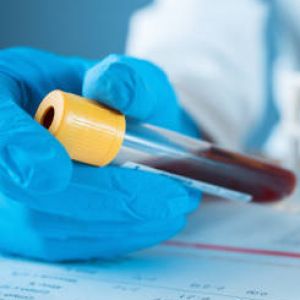How Antibody Pairs for ELISA Quantify Target Analyte?Posted by Vivian creative on March 31st, 2021 How Antibody Pairs for ELISA Quantify Target Analyte? Due to the ability to improve the specificity and sensitivity of detection and analysis, antibody pairs have been widely used in fields like cancer, autoimmune disease, metabolic disease, and infectious disease. What Are Antibody Pairs? Two separate antibodies with diverse epitopes or non-overlapping binding places are developed into a set of antibodies for the same protein antigen. This set of antibodies, called antibody pairs, can bind to the same target at simultaneously because of the differential epitope recognition, forming the well-known sandwich ELISA (enzyme-linked immunosorbent assay). The paired antibodies for ELISA contain two antibodies, one is for capture and the other for detection. The matched antibody pairs could then be jointly used in an immunoassay to capture and detect a single target, which significantly improves the accuracy when detecting and quantifying interaction molecules in situ. Antibody pairs also ensure the sub-cellular localization, decreasing the possibility of ignoring those imperceptible events. How Antibody Pairs for Sandwich ELISA Works? As it’s pointed out, antibody pairs consist of specific capture and detection elements. The vital importance is to ensure that the two antibodies detect different epitopes for a more accurate amount of the target bounds. The measurement starts from immobilizing the specific capture antibody to a solid surface, for example, the bottom of the 96-well polystyrene microplate. After overnight incubation, samples, standards, target antigen, or controls, which will bind to the immobilized capture antibodies, are added to these wells for further operations. Followed by the second addition of the detection antibody, a “sandwich” as the following picture indicates is coming out. Later, incubation with the enzyme-antibody-target complex will produce a substrate solution that can be used to assess the signal intensity. And the final detection is finished if the result is a direct proportion to the target concentration in the original specimen. Three Forms of Sandwich ELISA Sandwich ELISA is further divided into 3 forms according to the detection principles and the usage of the enzyme-labeled capture antibody.
Advantages and Disadvantages of Antibody Pairs for Sandwich ELISA The biggest excellence of antibody pairs for ELISA is its high sensitivity and specificity. Outperforming direct, indirect, and competitive ELISA, sandwich ELISA renders 2 to 5 times sensitivity than the others. What’s more, it’s featured by adding two different antibodies to detect the target antigen, resulting in better specificity and flexibility. Nevertheless, it's no doubt that these advantages can’t make up for its obvious shortcomings. Matched antibody pairs require that the size of the interested antigen should be large enough to bind to different antibodies. Also, reasonably, finding the desired antibody pairs for sandwich ELISA that can recognize different epitopes while against the same target antigen is challenging. Quantify Target Analyte with Antibody Pairs Products and Services Most of the time, scientists need to develop monoclonal antibody pairs, polyclonal antibody pairs, or customized antibody pair products for specific projects. More qualified detection should be delivered with the proper application of various antibody pairs. Like it? Share it!More by this author |


